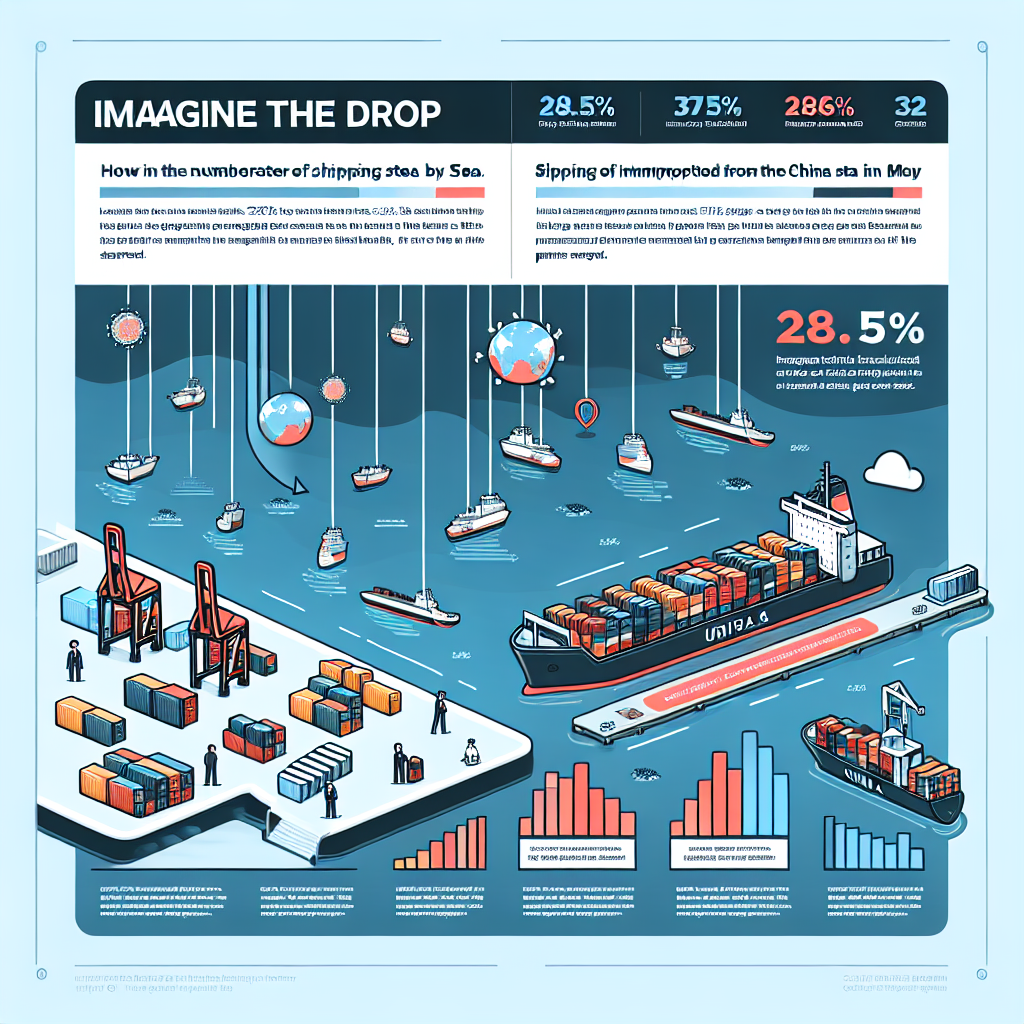Supply chain technology provider Descartes announced on Monday (June 9th) that due to the impact of tariffs, the number of containers imported by the United States from China by sea in May dropped by 28.5% compared to the previous year, marking the largest decline since the outbreak of the pandemic. This led to a decrease in container imports in the United States in May.
Descartes is a global leading company specializing in integrating logistics-intensive business. According to a global shipping report released by the company in June, in May 2025, the volume of container imports in the United States saw a decrease after several months of growth, with a decrease of 9.7% compared to the previous month and 7.2% year-on-year, amounting to 2.18 million twenty-foot equivalent units (TEUs), ending the almost record-breaking growth driven by companies stockpiling goods in advance to avoid tariffs.
Historically, import volumes in May are usually higher than in April, but 2020 during the pandemic was the only year in the past seven years to see a month-on-month decline. Despite a strong performance in the early part of the year in container imports by sea to the United States, the decline in May marks a significant contraction, reflecting the impact of tariff fluctuations and intensified trade pressures. In the first five months of this year, the total import volume of the United States increased by 5.3% compared to the same period in 2024, but the rate of growth has slightly slowed down.
China is the largest maritime importer for the United States, with goods entering the country through ports, including the busy ports of Los Angeles and Long Beach. Descartes data shows that in May 2025, the number of containers imported from China to the United States dropped to 637,001 TEUs, a 20.8% decrease from April (804,122 TEUs) and a 28.5% year-on-year decrease. Additionally, the proportion of China’s container imports to the United States in May dropped to 29.3%, reaching the lowest level in over two years.
The ports on the U.S. West Coast rely more heavily on trade with China and are therefore bearing the brunt of the trade decline. Descartes stated that from April to May, the import volume of Chinese goods at the busiest ports of Long Beach and Los Angeles in the United States dropped significantly by 31.6% and 29.9%, respectively.
The main goods imported from China include furniture, bedding, plastic products, machinery, toys, and sporting goods.
Jackson Wood from Descartes stated, “After months of import growth and a wave of pre-shipping in April, the impact of new tariffs began to show in May. The effects of the U.S.-China policy shift are now clearly reflected in monthly trade volumes.”
He mentioned that although the 90-day tariff reduction agreement reached by both countries may bring some relief to U.S. importers in the short term, as businesses continue to reassess procurement strategies amidst rising landed costs and the cancellation of tariff exemptions for small parcels imported from China, trade cost pressures will continue to increase, and the volume of imports of goods originating from China may remain weak in the coming months.
Last month, the U.S. and China agreed to a 90-day tariff truce. Officials from both sides held the second round of trade negotiations in London on Monday (June 9th) with the aim of easing trade disputes.
Port executives and shipping consultants anticipate a rebound in the volume of goods from China during the tariff truce period, but the increase is expected to be more moderate.

